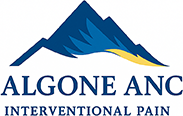What is Genicular Nerve Block?
Your knee joint is formed by bones, tendons, and ligaments and innervated by various nerves. Nerves responsible for transmitting pain signals from different areas of the knee to the brain are collectively referred to as genicular nerves.
A genicular nerve block is a minimally invasive procedure where anesthetic medication is injected into one or more of the genicular nerves to control pain. Three main genicular nerves supply the knee joint: the superior lateral genicular nerve, the superior medial genicular nerve, and the inferior medial genicular nerve. A genicular nerve block may be administered to any of these nerves and relieves pain by interrupting the pain signals as they travel to the brain.
What are the Indications of Genicular Nerve Block?
A genicular nerve block is recommended in the treatment of chronic knee pain due to conditions such as osteoarthritis and degenerative joint disease. It helps identify the source and pathway of your pain while relieving your symptoms short term. A genicular nerve block can be used to treat post-operative pain after knee replacement surgery.
People who cannot undergo surgery for various reasons may also benefit from a genicular nerve block for knee pain. If you have significant pain relief with a genicular nerve block, your doctor may recommend a radiofrequency ablation procedure that involves damaging the genicular nerves for more lasting pain relief of 6 months to a year.
What are the Preparations needed for Genicular Nerve Block?
Your doctor will give you specific instructions to help you prepare for a genicular nerve block. You should generally be healthy and not have any infections. Any blood-thinning medication should be stopped a week before the procedure. The procedure may be performed under sedation for which you should be on an empty stomach at least 6 hours prior.
How is Genicular Nerve Block Performed?
The steps involved in administering a genicular nerve block include the following:
- You will sit or lie on your back. A pillow may be placed under your knee.
- The skin over your knee is carefully cleaned and disinfected.
- If sedation is recommended, it is administered through an IV line and you will be losely monitored.
- Your doctor will identify the genicular nerves to be targeted using ultrasound or fluoroscopic imaging.
- The skin over the injection site is numbed with anesthetic using a fine needle. The genicular nerves are then targeted with a slightly larger needle and the medication is injected.
- The needle is then removed and a bandage applied.
The entire procedure takes about 15 to 30 minutes. It may be longer if you have received sedation.
What is the Postoperative Care for Genicular Nerve Block?
Your doctor will give you certain instructions for postoperative care and effective recovery.
- Avoid driving yourself home if you have received an IV sedative.
- Avoid strenuous activity for 24 hours after your genicular nerve block.
- You may feel dizzy, lightheaded and nauseous after the procedure. Drinking water and eating lightly help control these symptoms.
- You may notice some swelling at the injection site which can be treated by application of ice and pain medication.
What are the Risks and Complications of Genicular Nerve Block?
Although genicular nerve block is a relatively safe procedure, it may be associated with certain side effects such as:
- Weakness or numbness in the leg
- Bleeding and infection at the injection site
- Persistent knee pain
- Mild headache






